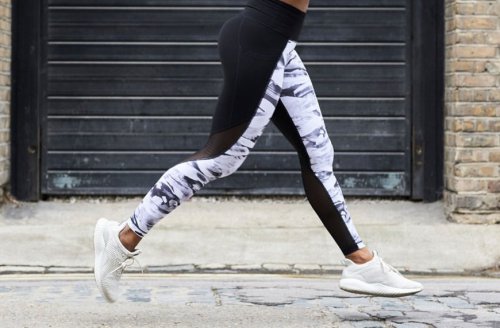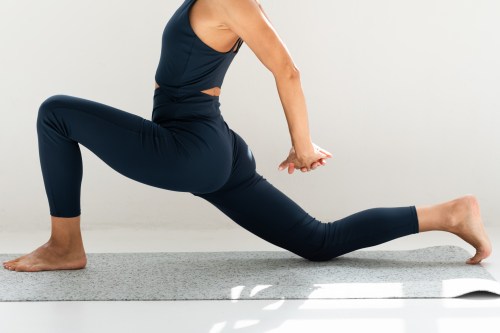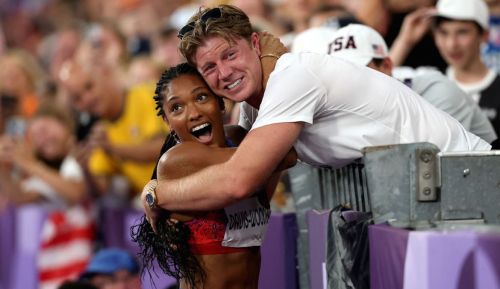Whether you’re jogging, doing Pilates, or hitting up a strength training class, you’re probably already savvy about remembering to keep your shoulders back and your core engaged. But there’s another body part that you should be paying attention to in workouts, and it often gets the short end of the stick: your feet. Having correct foot and ankle form (and the strength and flexibility to maintain it) not only makes certain exercises more effective, but it can also help prevent you from from getting hurt.
“I think of not engaging your feet as really not engaging much of your leg,” says Shannon Berkeley, a manager and instructor at Uptown Pilates. “In order to engage your foot in flexion or pointing it, you’re probably engaging other muscles in your leg at the same time.” So practicing proper foot form is really helping you to get the most out of your workout.
Why it matters if you’re pointing or flexing
It makes a lot of sense when you think about it: Imagine you’re pointing your toe while your leg’s fully extended. This means you’re lengthening the top of your leg from your quads through your shins, and all the way down to your big toe, according to Berkeley. On the other end of the spectrum, flexing your foot lengthens the back of your leg from your hamstrings, down the back of your knee, into your calf, and out through your heel while also engaging your quads. So yeah, your feet are pretty powerful.
Think about doing a Pilates jackknife, for example. You lift your legs, roll your legs up over your head and lift them to the ceiling (like a shoulder stand in yoga). Berkeley says she would instruct you to point your toes and engage your heels in a slight turn out. “It’s going to help you engage the inner thighs and your seat,” Berkeley says.
Lainee Hunter, a senior instructor at Physique 57, says your feet are your foundation.”When you’re standing, everything comes from the ground up,” she says. “If the feet are wonky, it’s going to put torque on your knees, which then translates up to the hip which then goes into your low back. Think of it as kind of like a chain.” When Hunter is teaching barre and has clients lift onto their toes, she often notices they let their weight fall out toward their pinky toes instead of lengthening their legs and stabilizing through the big toe.
“That will translate up into the ankle which can create instability.” Hunter says. “It’s not engaging and flexing. Weight should be over your big toe and the ball of your foot which is so much more stable.” Like Berkeley, Hunter says she has her clients alternate between working with their feet pointed and flexed to encourage ankle stability and mobility.
Just don’t overwork in one position
While running or playing sports like soccer and tennis, Berkeley says your feet and ankles are moving in different directions, so being unbalanced isn’t an issue. But, if you’re always dancing in pointe shoes, you want to focus a bit more on exercising and stretching with your feet flexed, Berkeley explains. If you perform exercises where your foot is always flexed like horseback riding, cycling, or rowing, Berkeley says you should do a bit more work with your feet pointed to make sure you have the mobility to go in the other direction.
“It’s really a balance thing,” Berkeley says, noting that it’s about making sure her clients can rotate through the whole articulation of their foot for equal work through the entire lower body. The best part of being more aware of your foot position, though? The more individual attention you pay to your feet, the less you’ll have to think about them while doing bigger movements—yay muscle memory!
“When I’m dancing or when I’m in an audition, I don’t have time to think: ‘Where’s the orientation of my toes when I’m doing this move?'” says Hunter. “It just goes there so I can think about putting on a show.”
On your feet all day? A foot doc gave us the best shoes for standing to protect both your feet and your low back. And these minimalist running shoes are *perfect* if you want to try barefoot running without actually being barefoot.
Sign Up for Our Daily Newsletter
Get all the latest in wellness, trends, food, fitness, beauty, and more delivered right to your inbox.
Got it, you've been added to our email list.











